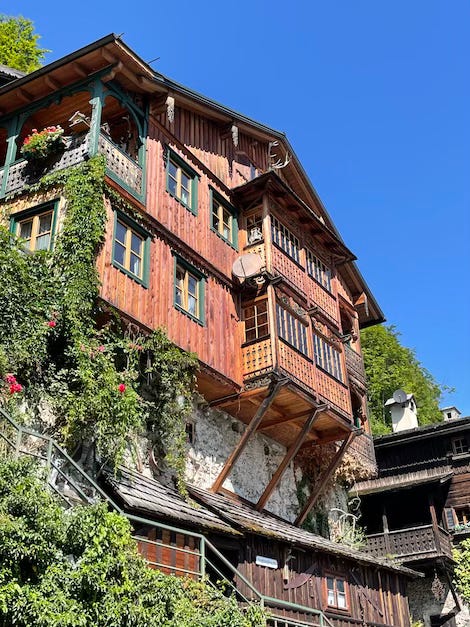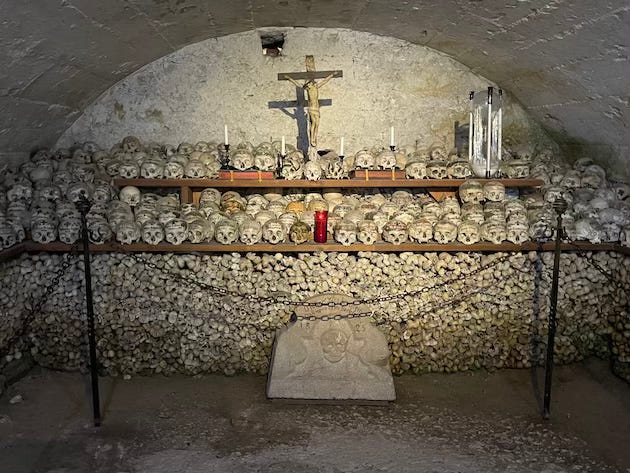Hallstatt, Austria
Hallstatt is a beautiful village and you often see pictures of it on-line when highlighting fantastic places in Austria. Unfortunately, it is also one of those places which suffers from over tourism. It is a Unesco World Heritage site with just over 700 inhabitants. One can imagine when 10.000 tourists a day visit the place in summer, that the inhabitants might not be overjoyed. I did feel a little bit bad, visiting it at the end of August which still would be peak season. However, we were in the neighbourhood …
We had decided to leave the camping early to be able to find a parking place. But, when you are out camping, it always takes longer to prepare, and we did not leave until 10.30 in the morning. Arriving at the town border the signs showed that all parking places were already occupied. However, we were lucky because at the entry to the village we found a camping, turned into it, and found ourselves a place for the night. Perfectly situated within walking distance of the village, and also close to an evening dip in the lake.
The Ossuary
Hallstatt is situated in the district of Gmunden in Upper Austria, in the Dachstein massif, in the Salzkammergut region. Up until the end of the 19th century you could only reach the village by boat, and it was only in 1890 that the first road was built. In spite of the difficult access to the area it nevertheless became a place of human settlements as far back as 800-450 BC (Early Iron Age), when Celtic people settled down. The village has given its name to these early settlers as the ‘Hallstatt culture’. One reason for the settlements was that the area is a rich source of natural salt. A salty region as you have found if you have read my earlier posts. The salt mine, still in use today, is the world’s oldest working salt mine. It was not on our itinerary for the day, but might be worth a visit.
The village is lingering on the west side of the lake, and its houses are climbing along the hillside. A small street goes through the whole village, along the shore of the lake, which makes it a beautiful walk. We decided to walk straight through the village and start at the other end, and slowly walk back.
The first stop was the church of Maria Himmelsfahrt which is surrounded by a rather beautiful cemetery. Lingering half way up the hill with breathtaking views over the lake.
The most interesting display though is the ossuary. I am sure you all know what an ossuary is? No? Well, as I learned, the ossuary is situated in a small chapel on the cemetery. Inside you find hundreds of skulls, both painted and decorated with a personal details of the deceased, as well as their name and date of death. It is all a little bit macabre, but was the way they buried people in the old days. The deceased lie in their grave for about ten years before the skulls are removed and placed in the ossuary. The tradition still exists in the village, although it is not so common to use this burial ceremony today. If it is the way you want to be remembered you have to put your wish in your will and it will be executed according to tradition.
We continued down the small alleys that wound themselves around the mountainside. Crossing a small water canal and coming down to the square where we sat down for a glass of prosecco, viewing people going about their daily lives, and tourists wandering around.
Next stop was the Welterbemuseum (Heritage Museum) which showed us the story of the village from pre-historic times up until present day. We ended the tour by having an early dinner in a restaurant by the lake. Contemplating the day, the village and its history. There is an archeological excavation area on top of the mountain with a huge burial place. You can go there by cable car, but we gave it up, being somewhat tired and exhausted by the heat. A slow walk back to the camping, changing into swim wear and going for a refreshing dip in the lake was much more tempting.
When we left Hallstatt the next day, through the tunnel that connects it to the other side of the mountain, we ran into a demonstration against over tourism. It is a big problem for many popular places today. I understand that the people might be fed up with tourists, which makes it difficult to remain in their own city. It seems it is a problem that will not go away in the near future.











